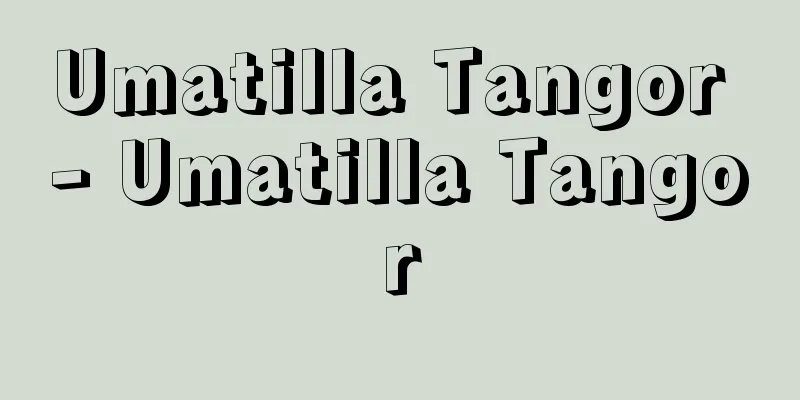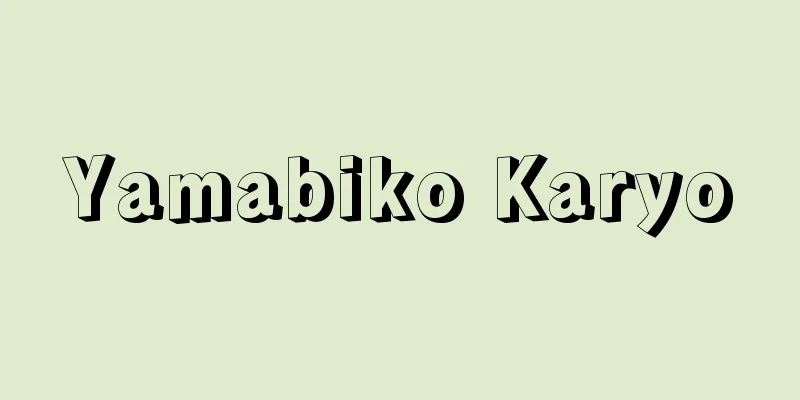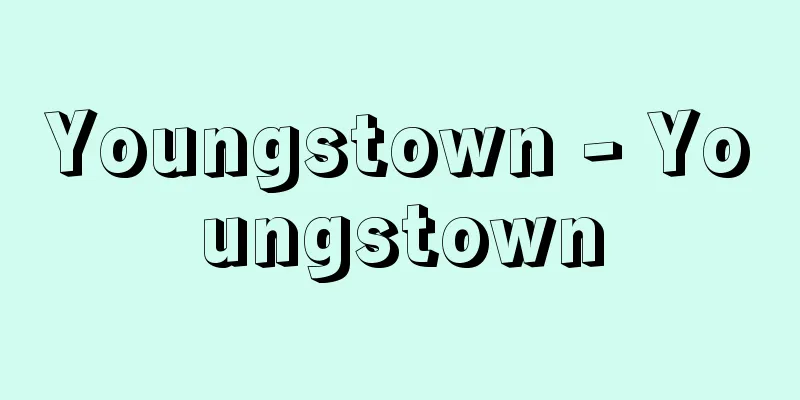Civilization and Enlightenment

|
This refers to the modernization phenomenon that occurred during the early Meiji period as a result of the adoption of Western civilization. The literal meaning of "civilization and enlightenment" is the advancement of learning and the opening up of the world, and it is sometimes used synonymously with "modernization," but it is usually used to refer to historical phenomena during the early Meiji period, and is sometimes used to refer to the period up to around 1877 (in contrast to the Freedom and People's Rights Period) or the first half of the Meiji period (in contrast to the nationalism of the 1880s). In the early Meiji period, as the song goes, "Tap a topknot and you hear the sound of old-fashioned sleaze, tap a shaven head and you hear the sound of civilization and enlightenment," the old things of the previous era were rejected as uncivilized and barbaric, and the path to social progress was believed to be to embrace the Western culture that was pouring in like a raging wave, and "civilization and enlightenment" became the watchword of superiority in this period. The phrase "civilization and enlightenment" is a coined word that combines "civilization" and "enlightenment," both of which have their origins in the Chinese classics, and is said to have been first used by Fukuzawa Yukichi in his book "Western Affairs." The phenomenon of civilization and enlightenment was the westernization of lifestyles, and items such as soap bubbles, lamps, umbrellas, hats, Western clothing, Western-style buildings, gas lamps, schools, newspapers, magazines, and even architecture that combined Japanese and Western styles, as well as beef stew, became popular as enlightened items. These were prominent in the downtown areas of major cities such as Tokyo, Osaka, Kyoto, and the open ports of Yokohama and Kobe, and were not common in the provinces. However, they captivated the hearts of people all over the country through newspapers, magazines, and nishikie prints, as well as through propaganda and educational publications for civilization and enlightenment, such as Kanagaki Robun's "Agura Nabe" and Kato Yuichi's "Civilization and Enlightenment." However, what made the whole nation feel "civilized and enlightened" more than anything else was the government's proactive adoption of Western culture, which was implemented through the Iwakura Mission, overseas students, and foreign employees, and which took the form of modernization policies, such as the introduction of education systems, conscription, and land tax reforms. These policies dramatically changed the way people lived and imposed burdens on the people, so the government made efforts to promote and educate them by issuing frequent announcements, mobilizing teachers, and holding expositions. The policies penetrated the countryside relatively smoothly in urban areas, and in rural areas the wealthy farmers and merchants saw the emergence of a new world where they could work, but it came as a great shock to the general public, and there were successive uprisings against the new government, such as the Blood Tax Rebellion. [Masaki Hirota] "Civilization and Enlightenment" by Kimura Takeshi (Shibundo Japanese History Paperbacks)" ▽ "Civilization and Enlightenment and Popular Consciousness" by Hirota Tamaki (1980 Aoki Shoten) Source: Shogakukan Encyclopedia Nipponica About Encyclopedia Nipponica Information | Legend |
|
明治前期における西洋文明の摂取による近代化の現象をいう。「文明開化」の字義は、学問が進み世の中が開けることであり、また「近代化」と同義に使われることもあるが、普通には明治前期の歴史的現象をさすことばとして使われ、明治10年(1877)ころまで(自由民権期と対比して)または明治前半期(明治20年代のナショナリズムと対比して)をさして「文明開化期」と称したりする。 明治前期においては、「チョンマゲ頭を叩(たた)いてみれば因循姑息(いんじゅんこそく)の音がする、ザンギリ頭を叩いてみれば文明開化の音がする」と歌われたように、前時代の古いものを野蛮未開と否定し、怒濤(どとう)のように入ってくる西洋文物を摂取することが社会進歩の道であると観念され、「文明開化」はこの時期の優越的な合いことばとなった。「文明開化」ということばは、漢書に出典をもつ「文明」と「開化」を結び付けた造語であって、福沢諭吉が『西洋事情』において初めて使用したといわれる。 文明開化の現象は、生活の洋風化としては、シャボン、ランプ、洋傘、シャッポ、洋服や洋館、ガス灯、あるいは学校、新聞、雑誌、さらには和洋折衷の建築から牛鍋(ぎゅうなべ)まで、開化物として流行した。これらは東京、大阪、京都や開港場の横浜、神戸など大都市の中心街に際だってみられ、地方には一般化していなかったが、新聞、雑誌、錦絵(にしきえ)などによって、あるいは仮名垣魯文(かながきろぶん)『安愚楽鍋(あぐらなべ)』、加藤祐一(ゆういち)『文明開化』など文明開化の宣伝教化の出版物によって、全国の人々の心を魅了した。しかしなによりも全国民に「文明開化」を実感させたのは、岩倉使節団や海外留学生、御雇い外国人など、政府の意欲的な西洋文明摂取のもとに展開される開化政策であって、それは学制、徴兵令、地租改正などとなって全国民に降りかかってきた。それら諸政策は、これまでの生活慣習を急激に変えるとともに、民衆に負担を強いるものであったので、政府はたびたびの布達や教導職の動員、あるいは博覧会開催などの宣伝教化に努めた。地方への浸透は、都市部では比較的スムーズに、また農村部でも豪農商層にとっては新しい世界で自分たちが活動できる場の出現として受け止められたが、一般民衆にとっては大きな衝撃として受け止められ、血税一揆(いっき)など新政反対一揆が続発した。 [広田昌希] 『木村毅著『文明開化』(至文堂・日本歴史新書)』▽『ひろたまさき著『文明開化と民衆意識』(1980・青木書店)』 出典 小学館 日本大百科全書(ニッポニカ)日本大百科全書(ニッポニカ)について 情報 | 凡例 |
<<: Outline of Civilization Theory - Bunmei-ron no no gairiyaku
>>: Bunmei Ittouki - Bunmei Ittouki
Recommend
kadalī (English spelling) kadali
…In addition to eating it raw, it is also used to...
Strich, F.
…Today, it can be considered a period designation...
Rossellini - Roberto Rossellini
Italian film director. Born in Rome. Born into a ...
Monte Cristo [island] - Monte Cristo
An island in the Tuscan Archipelago, in the Tyrrhe...
Janssen, A.
…It is one of the Catholic Church's clergymen...
Shoji paper
The base paper for shoji screens. It must be stron...
Insei period - Insei jidai
One of the periods in Japanese history. It mainly ...
Wei Hao
…Ming music was introduced to Nagasaki by Fujian ...
Fortress - Yosai
A defensive military facility built to increase t...
Asenyaku (English spelling) gambir
Also known as gambir (the Malaysian name for the p...
Preyer, W.
…D. Tiedemann's 1787 child observation record...
Numa (English spelling) Numa Pompilius
The second king of ancient Rome. Reigned 715?-673?...
X-ray telescope
A device for detecting X-rays emitted from celesti...
Nama
...They once lived in large numbers in South Afri...
Suki [Village] - I like it
A village in Nishimorokata County in western Miyaz...









